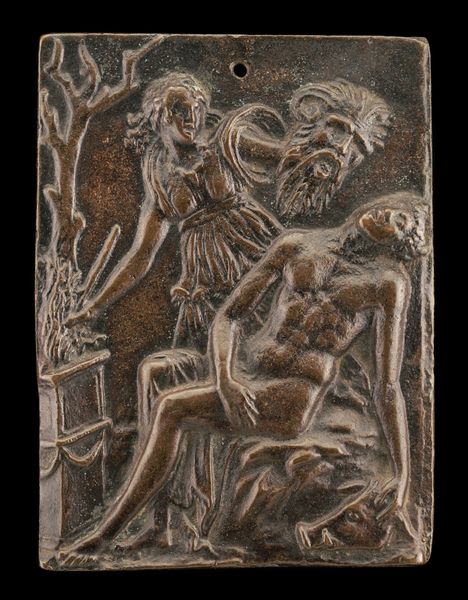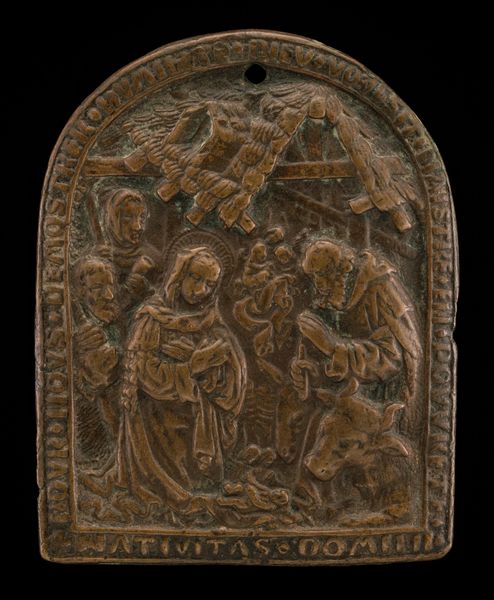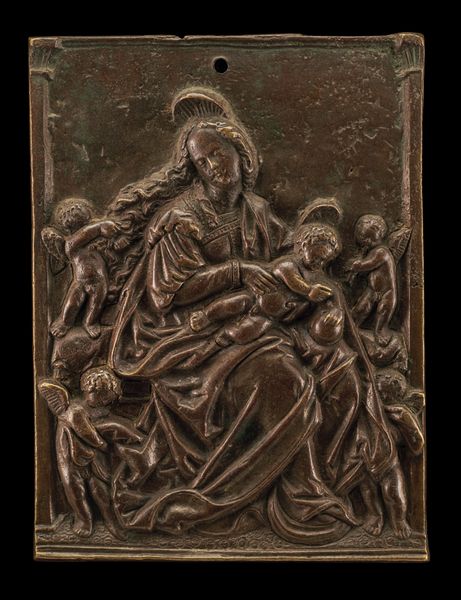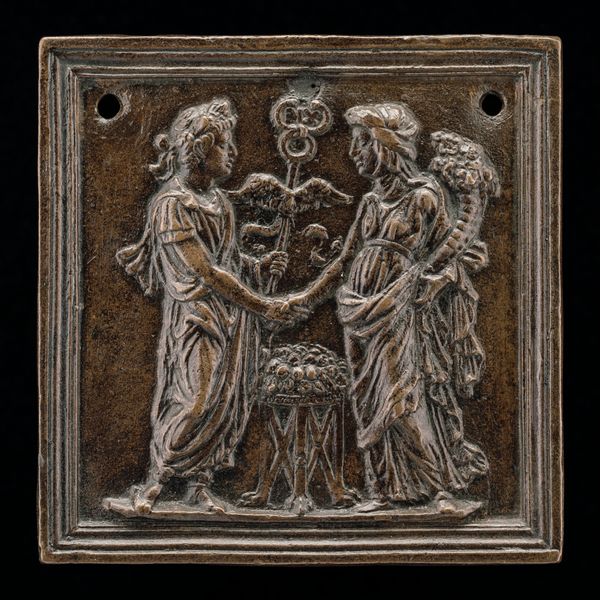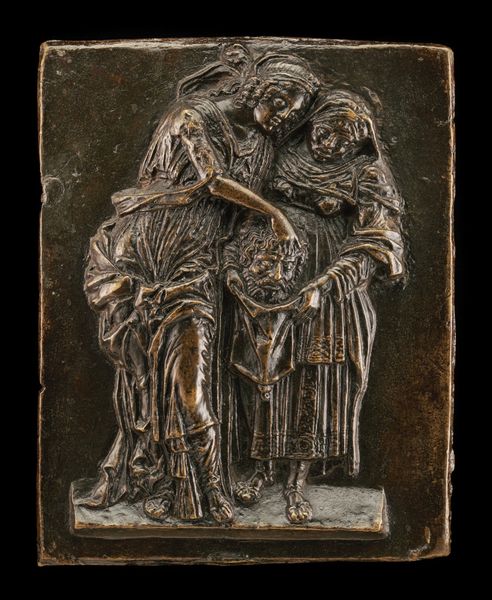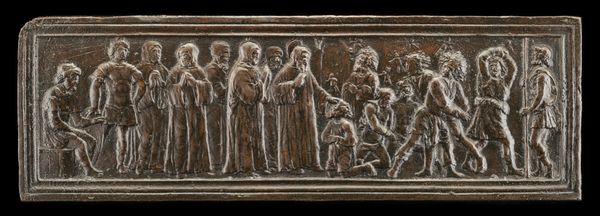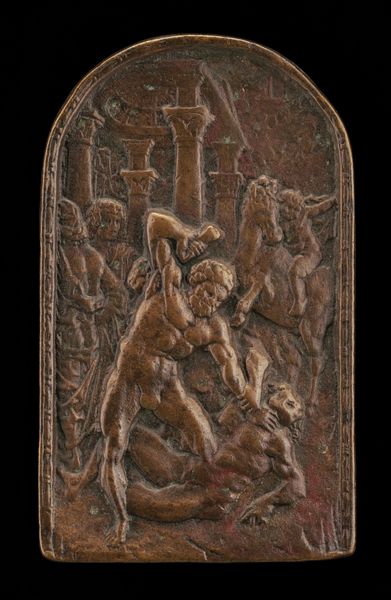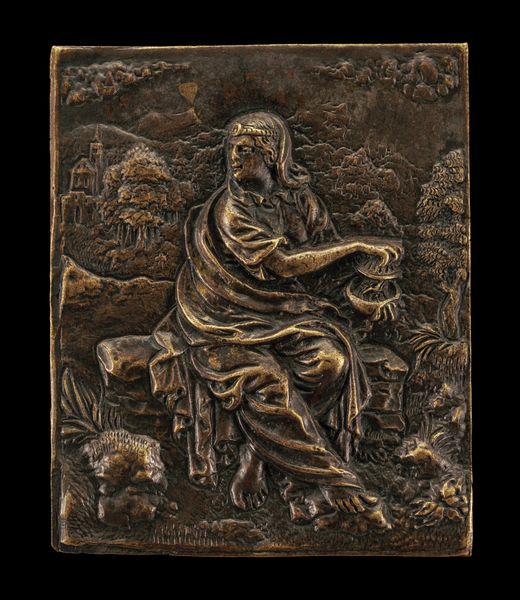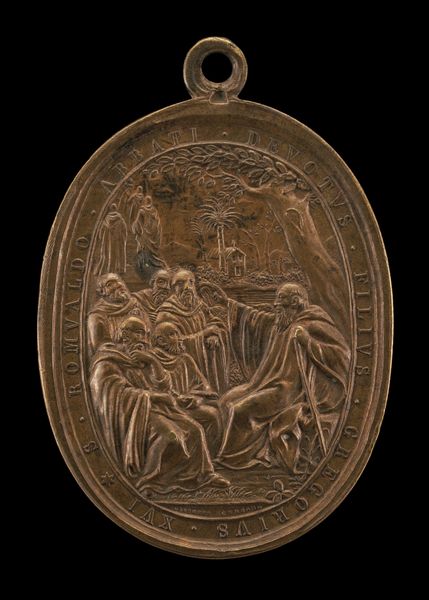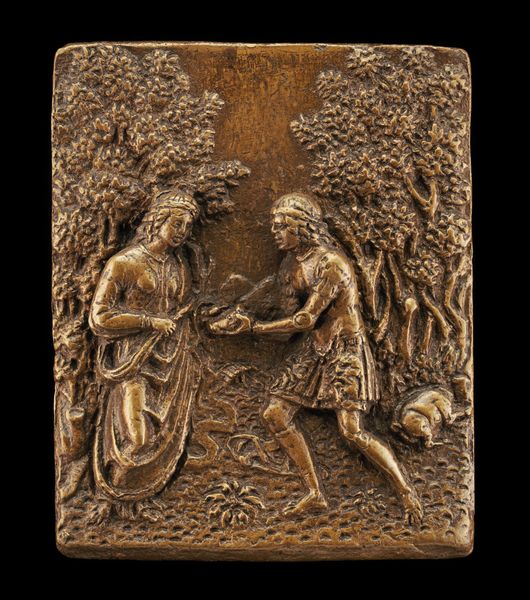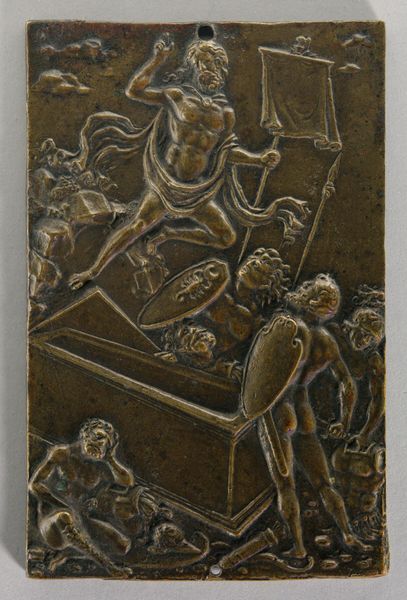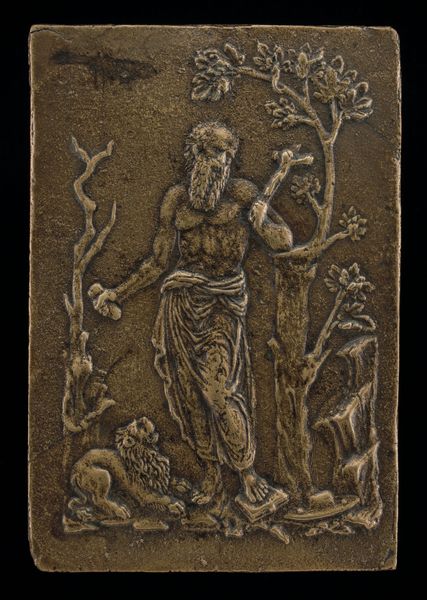
metal, relief, sculpture
#
portrait
#
metal
#
sculpture
#
relief
#
figuration
#
sculpture
#
carved
#
history-painting
#
italian-renaissance
Dimensions: overall: 7.23 × 5.6 cm (2 7/8 × 2 3/16 in.) gross weight: 79.09 gr (0.174 lb.)
Copyright: National Gallery of Art: CC0 1.0
Editor: So, here we have "Aristotle and Alexander of Aphrodisias," a metal relief sculpture from the early 16th century. It's pretty small, but there's a lot going on! Two figures, some landscape… It feels almost like a philosophical debate frozen in metal. What do you see in this piece? Curator: Immediately, I am drawn to the interplay of tradition and transformation. Look at the way Alexander is presenting Aristotle with a book, while Aristotle gestures outward, perhaps referencing a different source of knowledge: his empirical observations or natural philosophy, for example? How do these two figures engage the viewer? Editor: Well, Alexander, presenting the book, seems more contained, almost formal. Aristotle feels more dynamic with that outstretched hand. I guess I see the contrast between received wisdom and individual thought. Curator: Precisely! And observe the garb they wear, the symbols embedded in the relief: Consider the cultural implications in the Renaissance. Do these symbols hold true to their origins or have their meanings evolved in this piece, reflecting the shifting cultural landscapes of the time? How does this contrast highlight evolving thought? Editor: That’s interesting. I hadn't really thought about the clothing as symbolic. I was just reading it as sort of historical costume. But the way you phrase that changes everything. Curator: Visual symbols echo and transform across time. How can their stories reshape our understanding of this artwork, this snapshot of intellectual exchange? Do we carry our own set of assumptions or see a shift? Editor: That's fascinating! Looking closely, I see how carefully considered those details are. Curator: Indeed. It prompts me to reconsider the power of imagery, doesn't it? Editor: It definitely does. Thanks for pointing all of that out.
Comments
No comments
Be the first to comment and join the conversation on the ultimate creative platform.

